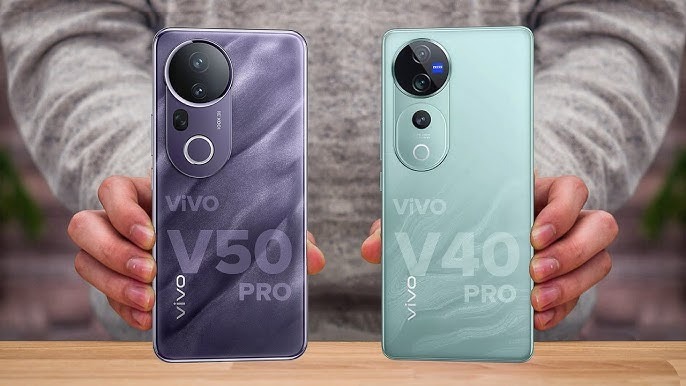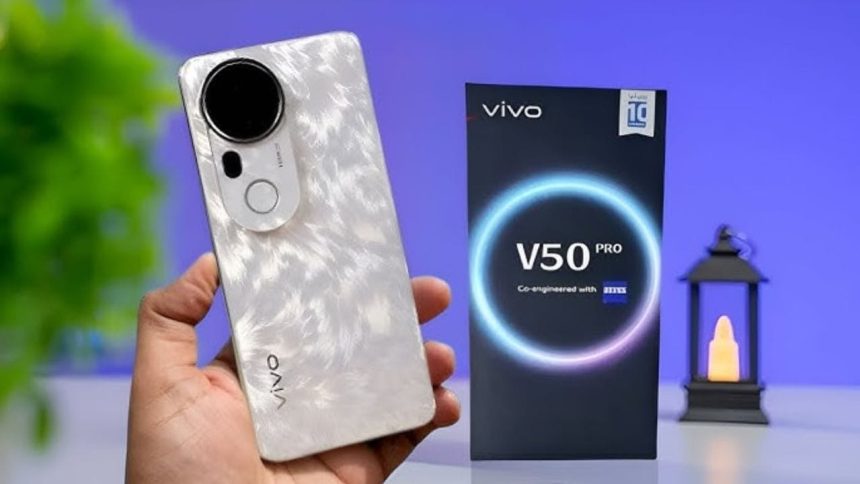Vivo is gearing up to launch its latest flagship, the Vivo V50, which promises significant advancements over its predecessor, the Vivo V40. Notably, the V50 continues Vivo’s collaboration with Zeiss, aiming to elevate smartphone photography to new heights. This exciting partnership builds on the success of previous models, infusing cutting-edge technology into everyday photography. With the rise of social media and content creation, the demand for high-quality smartphone cameras has never been greater, and Vivo is poised to meet this need.
Expected Specifications of Vivo V50
The anticipation surrounding the Vivo V50 is palpable, especially among photography enthusiasts who value quality and versatility in their smartphone cameras. As more users rely on their phones for photography, the innovative features offered by the V50 are expected to draw considerable attention. This launch could potentially redefine the landscape of mobile photography, offering tools and capabilities that rival traditional cameras.
With the smartphone market becoming increasingly competitive, Vivo is not just focusing on camera technology but also on enhancing user experience. The combination of powerful processing, sleek design, and innovative software features will be crucial in differentiating the Vivo V50 from its competitors. By incorporating advanced AI capabilities into its camera system, Vivo aims to provide features such as scene recognition, intelligent photo enhancements, and real-time adjustments to help users capture the perfect shot effortlessly.
While official details are pending, industry rumors suggest the following features for the Vivo V50:
- Display: A 6.8-inch AMOLED screen with a resolution of 1260 x 2800 pixels and a 120Hz refresh rate, ensuring smooth visuals.
- Processor: Powered by the Qualcomm Snapdragon 7 Gen 3 chipset, delivering robust performance for multitasking and demanding applications.
- Camera System: A triple 50MP rear camera setup, co-engineered with Zeiss, comprising:
- A 50MP main sensor with an f/1.88 aperture.
- A 50MP ultra-wide lens with an f/2.0 aperture.
- A 50MP telephoto lens with an f/2.0 aperture.
- Battery: A substantial 6,000mAh battery supporting quick charging capabilities.
- Operating System: Expected to run on Android 15 with Vivo’s Funtouch OS overlay.
- Storage and RAM: Options may include 8GB or 12GB of RAM paired with 128GB or 256GB of internal storage.
- Additional Features: An IP68 rating for dust and water resistance, stereo speakers, and an in-display fingerprint sensor.

When evaluating the Vivo V50 against the Vivo V40, it’s essential to consider the advancements in technology that will likely elevate the user experience. The V40, while impressive in its own right, set the bar high with its camera capabilities and overall performance. However, the V50 appears to be taking it a step further, particularly in terms of processing power, camera technology, and battery efficiency.
Comparative Analysis: Vivo V50 vs. Vivo V40
The Vivo V40 series, launched in August 2024, set a high standard with its Zeiss-engineered camera system and premium features. Here’s how the upcoming V50 is poised to differ:
- Camera Enhancements:
- Vivo V40: Featured a quad 50MP rear camera setup, including a Sony IMX921 main sensor, ultra-wide, telephoto, and depth sensors, all co-developed with Zeiss.
- Vivo V50: Rumored to maintain the triple 50MP configuration but with potential improvements in sensor technology and image processing, further refining photography capabilities.
- Display and Design:
- Vivo V40: Sported a 6.78-inch AMOLED display with FHD+ resolution and a 120Hz refresh rate.
- Vivo V50: Expected to slightly increase the display size to 6.8 inches with a higher resolution of 1260 x 2800 pixels, enhancing visual clarity and user experience.
- Battery Capacity:
- Vivo V40: Equipped with a 5,500mAh battery supporting 80W wired charging.
- Vivo V50: Anticipated to house a larger 6,000mAh battery, potentially offering extended usage time, though charging speed details remain unconfirmed.
- Processing Power:
- Vivo V40: Powered by the MediaTek Dimensity 9200+ processor.
- Vivo V50: Set to upgrade to the Qualcomm Snapdragon 7 Gen 3 chipset, promising enhanced performance and efficiency.
- Software:
- Vivo V40: Ran on Android 14-based Funtouch OS 14.
- Vivo V50: Expected to launch with Android 15, offering the latest features and improvements.
The Vivo V50 is shaping up to be a compelling successor to the V40, with notable upgrades in display quality, processing power, battery capacity, and camera technology. These enhancements, particularly in collaboration with Zeiss, underscore Vivo’s commitment to delivering premium smartphone experiences. Additionally, the comprehensive improvements in software and user experience are expected to provide a seamless interaction for consumers. As the official launch approaches, consumers can look forward to a device that builds upon the strengths of its predecessor while introducing meaningful improvements that cater to modern needs.
Please note that the information provided is based on available rumors and leaks. Official specifications and features will be confirmed upon the device’s official announcement. It is advisable for potential buyers to stay tuned for the launch event, where more detailed insights and demonstrations of the Vivo V50’s capabilities are expected.









